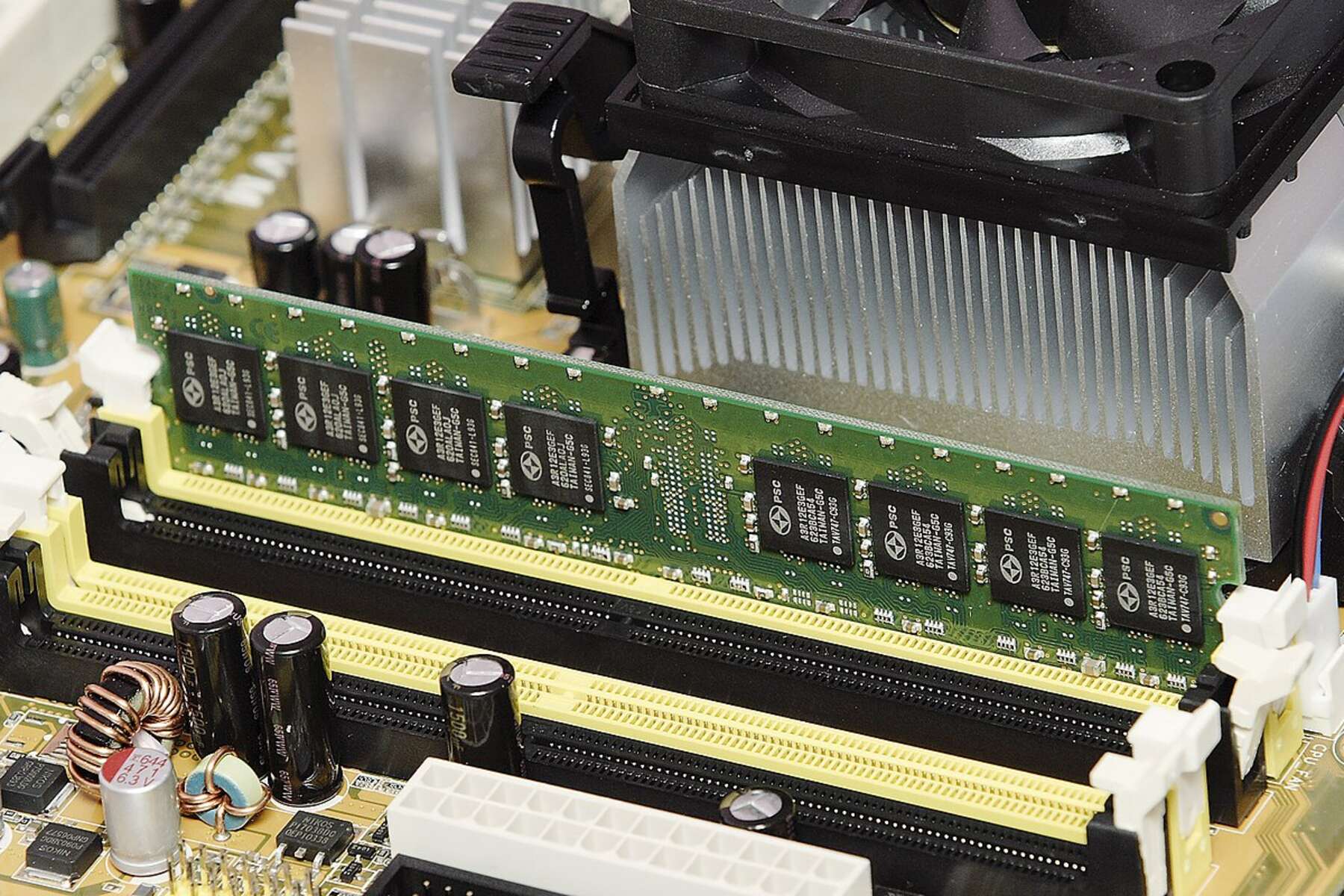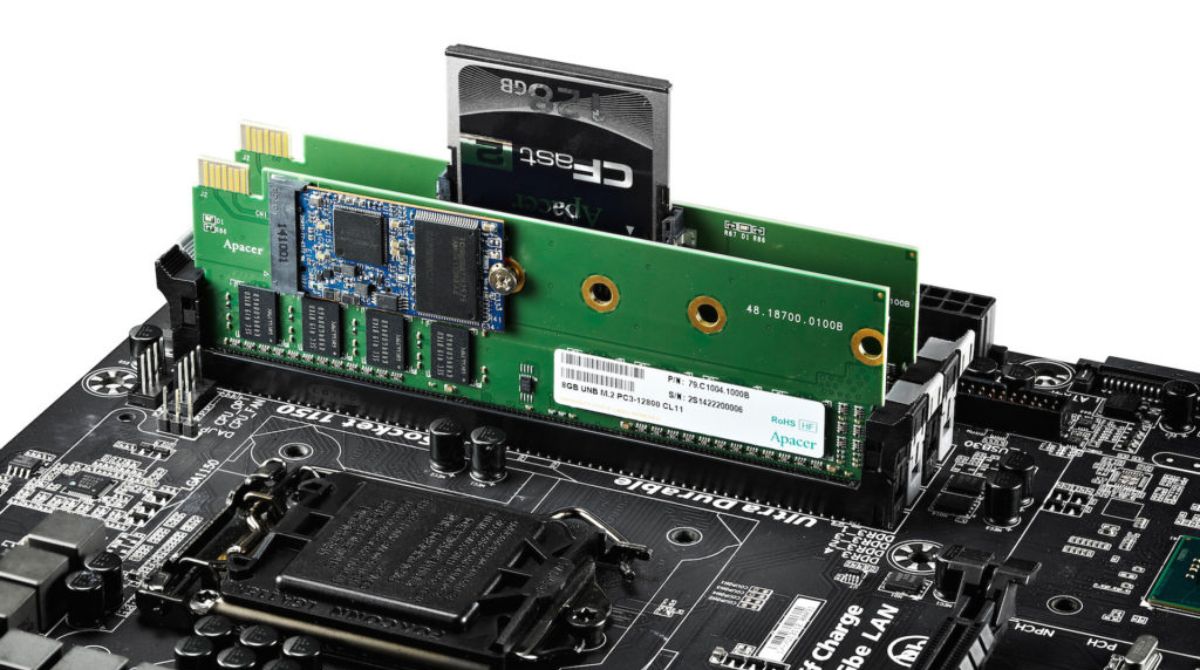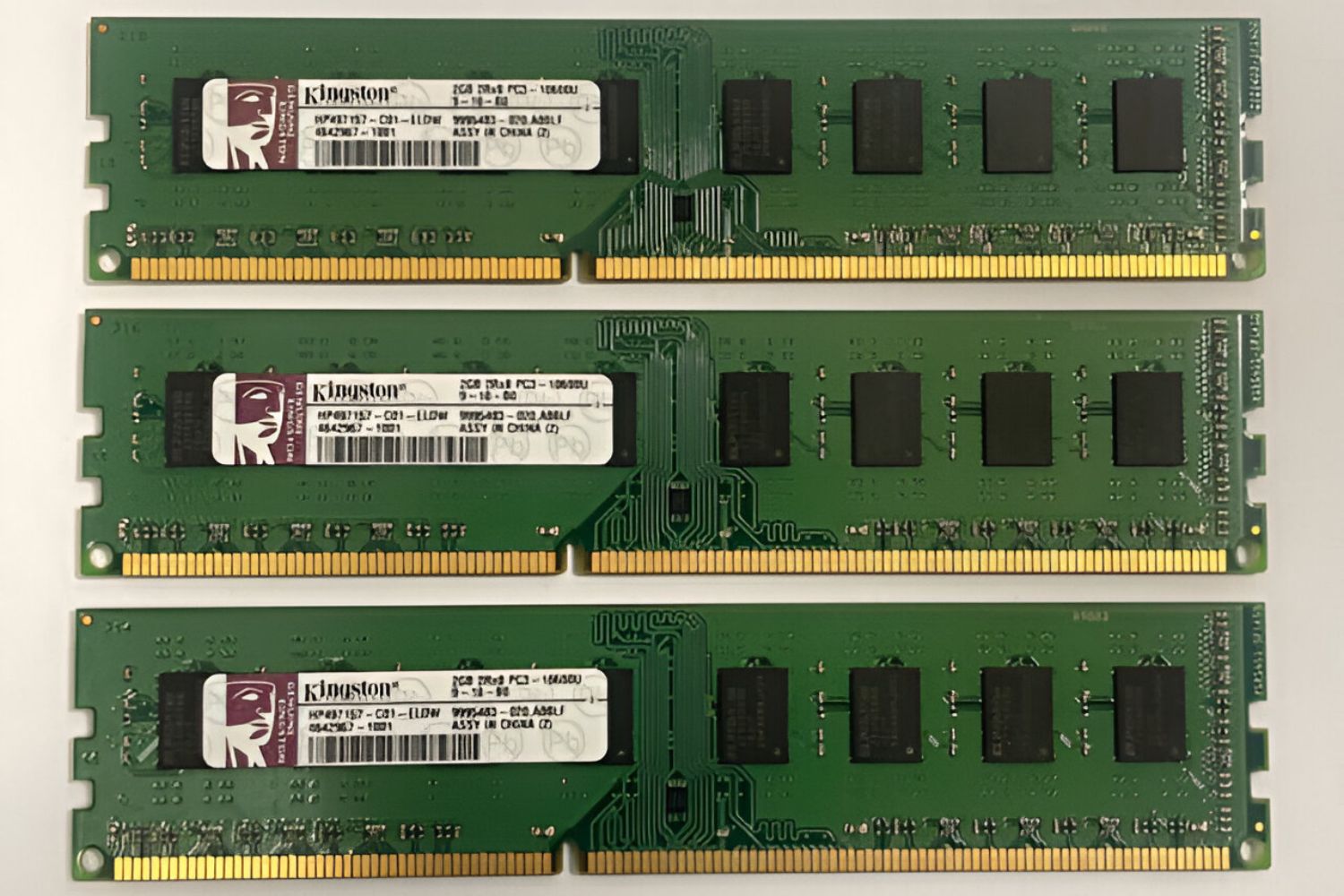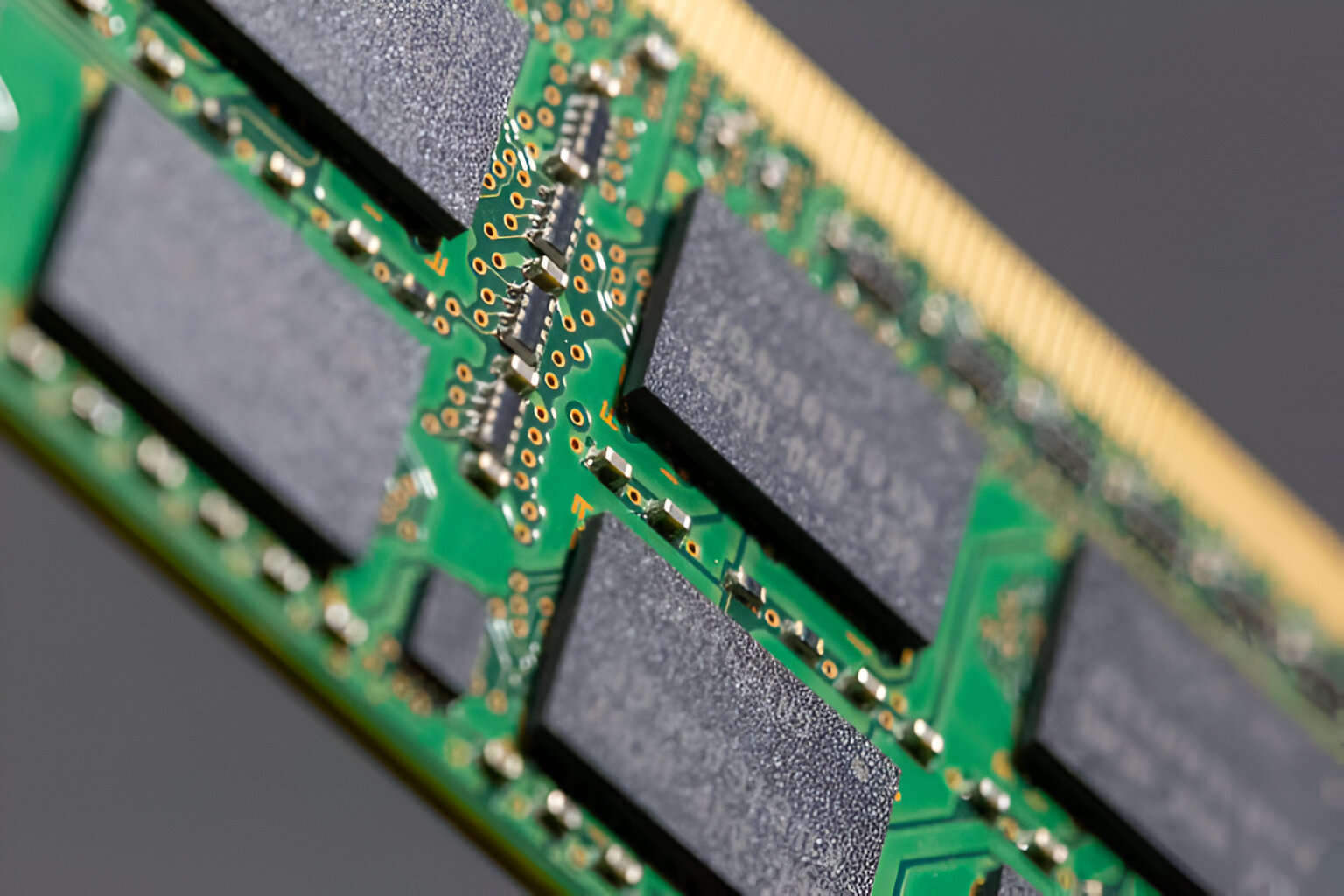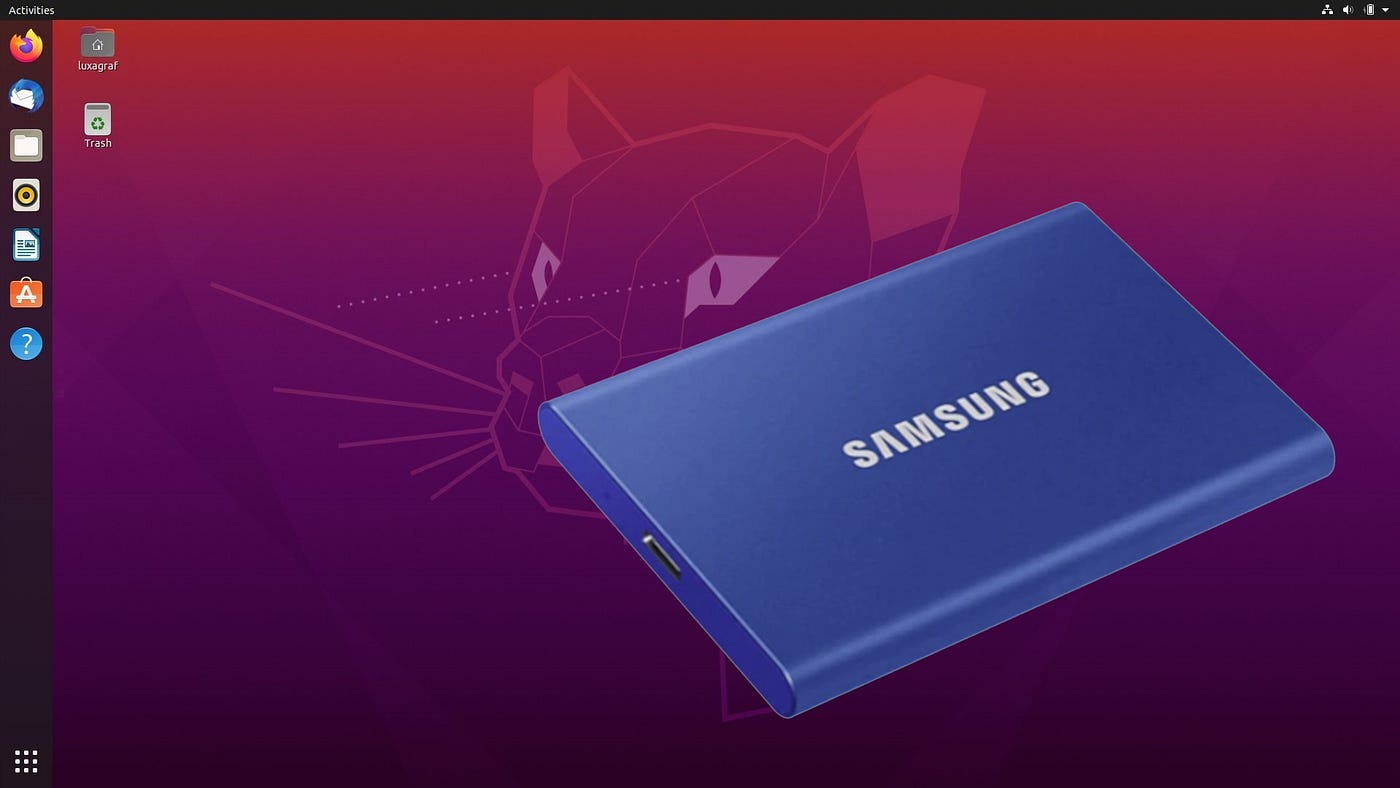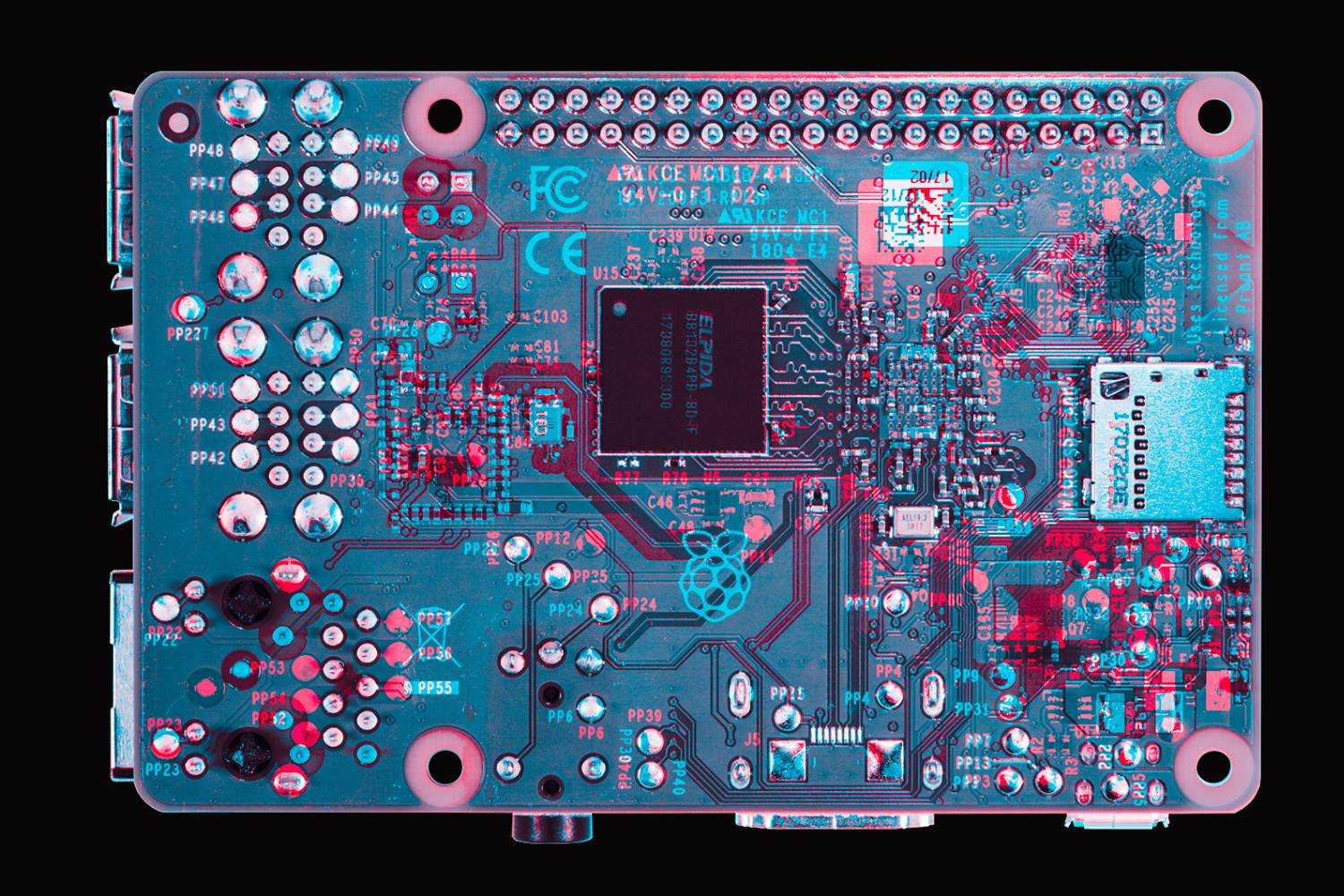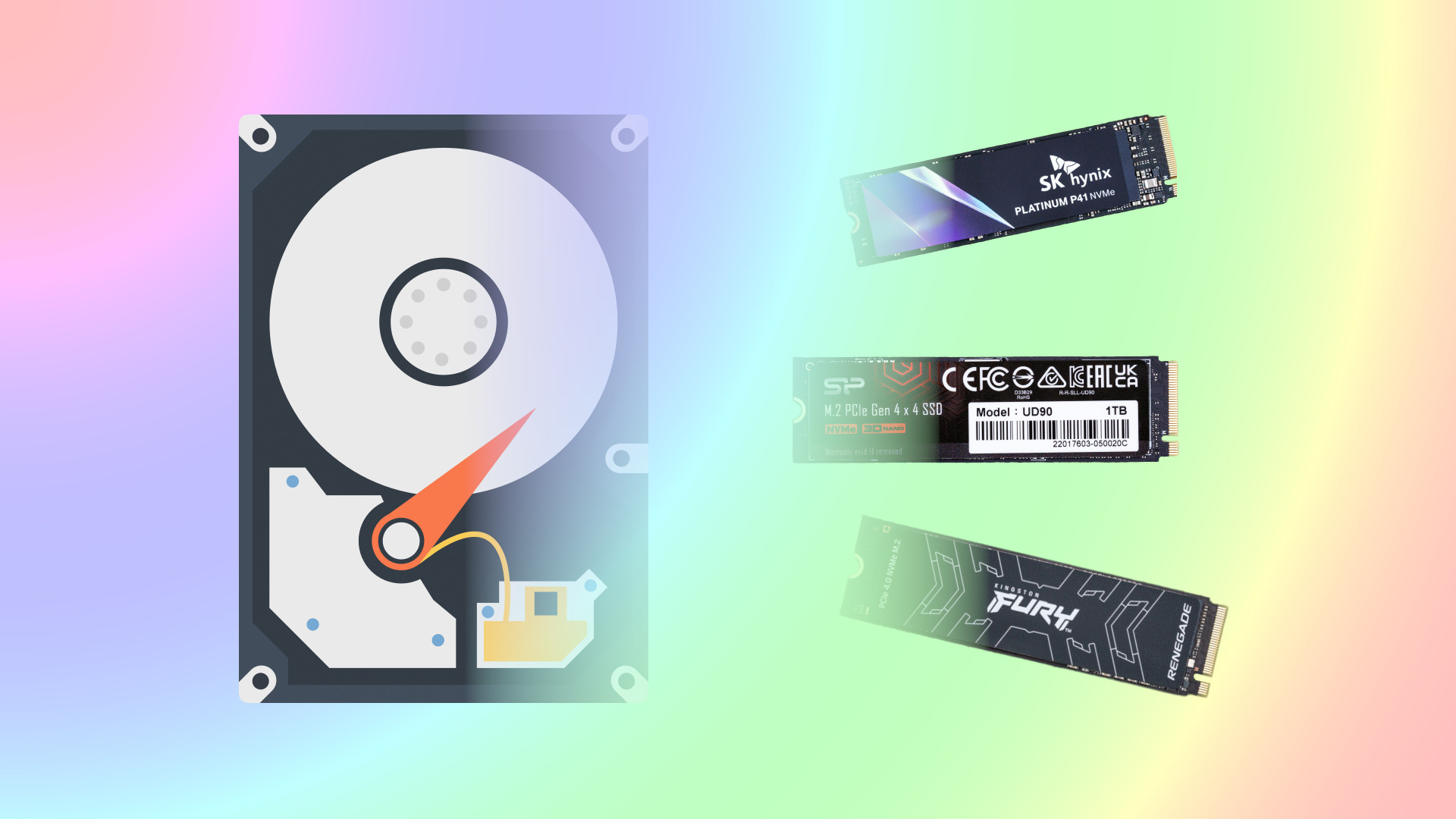Introduction
When it comes to computers and digital devices, data management is a fundamental aspect of their functionality. Data, in the form of files, documents, images, and more, is stored and processed by these devices to perform various tasks. Two key components involved in data management are RAM (Random Access Memory) and the Hard Drive. While both play crucial roles in storing and accessing data, there is a distinct difference between them.
RAM, often referred to as computer memory, is a hardware component that provides temporary storage for data that is actively used by the computer’s processor. On the other hand, the Hard Drive, typically found in the form of a hard disk or solid-state drive, is a non-volatile storage device that permanently stores data even when the computer is turned off. Understanding why data must be copied from the Hard Drive to RAM in order to be used in processing operations can shed light on the intricacies of data handling in computers.
In this article, we will explore the difference between RAM and the Hard Drive, how data is stored in each component, and the reasons why data must be transferred from the Hard Drive to RAM before processing. By the end, you will have a clearer understanding of why this data transfer is necessary and how it contributes to the overall functioning of a computer system.
What is RAM?
RAM, short for Random Access Memory, is a type of volatile computer memory that serves as a temporary storage location for data that is actively being used by the computer’s processor. Unlike the Hard Drive, which provides long-term storage for data, RAM is designed for quick access and retrieval of information during the computer’s operation.
RAM is comprised of integrated circuits that are electronically interconnected to form memory modules. These modules are then installed onto the motherboard of a computer. The amount of RAM a computer has can vary, typically ranging from a few gigabytes to several terabytes in high-end systems.
Data stored in RAM can be accessed randomly, meaning that the computer can locate and retrieve any piece of data stored in RAM without having to access the information sequentially. This random access feature allows for fast and efficient processing, as the computer can quickly retrieve data based on the requirements of the running programs or tasks.
One significant characteristic of RAM is its volatility. This means that the data stored in RAM is temporary and is lost when the power to the computer is turned off. Unlike the Hard Drive, which stores data persistently, RAM requires a continuous power supply to retain the information. When the computer is powered off or restarted, the data in RAM is erased, and the memory is wiped clean, ready to be used for new data when the computer is powered on again.
What is a Hard Drive?
A Hard Drive, often referred to as a hard disk or HDD (Hard Disk Drive), is a non-volatile storage device used in computers and other digital devices to store and retrieve data. It provides long-term, persistent storage, meaning that the data stored on a Hard Drive remains intact even when the power is turned off.
Hard Drives utilize magnetic storage technology to store data on one or more rotating disks, known as platters. These platters are coated with a magnetic material, and the data is recorded on them in the form of magnetic patterns. The platters are mounted on a spindle, and a mechanical arm, called the read/write head, moves across the surface of the platters to read or write data.
The size of a Hard Drive can vary, ranging from a few gigabytes to several terabytes or even petabytes in high-capacity enterprise drives. Hard Drives are commonly found in desktop computers, laptops, servers, and external storage devices.
One advantage of Hard Drives is their ability to provide a large amount of storage capacity at a relatively low cost. They are capable of storing a wide range of data, including operating systems, applications, documents, multimedia files, and more.
However, accessing data from a Hard Drive is generally slower compared to accessing data from RAM. This is due to the mechanical nature of Hard Drives, as the read/write head needs to physically move to the correct location on the disk to access the desired data. Despite this slower access speed, Hard Drives are crucial for long-term storage and data persistence, as they retain data even when the computer is powered off.
Difference between RAM and Hard Drive
RAM (Random Access Memory) and the Hard Drive serve different purposes in a computer system and have distinct characteristics that set them apart. Understanding the differences between these two components is essential for grasping their respective roles in data storage and processing. Here are some key distinctions between RAM and the Hard Drive:
1. Function: RAM is a volatile memory where data is temporarily stored while the computer is running. It provides fast and temporary storage for the data actively being used by the processor. On the other hand, the Hard Drive is a non-volatile storage device that stores data persistently, even when the power is turned off. It is designed for long-term storage and retrieval of data.
2. Speed: RAM offers much faster access to data compared to the Hard Drive. As its name implies, RAM provides random access to data, allowing the computer to quickly retrieve any stored information. This speedy access enables the processor to rapidly access and manipulate data, resulting in better overall performance. In contrast, Hard Drives have mechanical components that take time to physically read or write data, resulting in slower access speeds.
3. Capacity: RAM typically has a smaller capacity compared to the Hard Drive. The size of RAM in a computer system is typically measured in gigabytes (GB) or terabytes (TB), whereas Hard Drives can provide several terabytes or even petabytes (PB) of storage space. This difference in capacity is because RAM is intended for temporary storage of actively used data, while the Hard Drive is designed for larger-scale, long-term storage needs.
4. Volatility: RAM is a volatile memory, meaning that its content is erased when the power is turned off. As a result, any data stored in RAM is temporary and needs to be periodically saved to the Hard Drive or other storage devices to preserve it. Conversely, the data stored on the Hard Drive is non-volatile, remaining intact even when the computer is powered off. It allows for the persistence and availability of data over a longer period.
In summary, RAM and the Hard Drive differ in their function, speed, capacity, and volatility. RAM provides temporary, fast-access storage for data used by the processor, while the Hard Drive offers long-term, slower-access storage. Both components are integral to a computer system, complementing each other to enable efficient data management and processing.
How Data is Stored in RAM
RAM (Random Access Memory) is a volatile computer memory that stores data temporarily while the computer is running. Understanding how data is stored in RAM can provide insights into its functionality and impact on overall system performance.
Data in RAM is stored in the form of binary code – a series of zeros and ones. Each binary digit, known as a bit, represents the smallest unit of data storage. In modern computers, RAM is organized into cells, with each cell capable of storing a fixed number of bits. These cells are further grouped into larger units called words or bytes, with each byte typically consisting of 8 bits.
To access data stored in RAM, the computer uses memory addresses. Each byte in RAM has a unique address assigned to it, which allows the computer to locate and retrieve specific data when needed. By sending the appropriate address to the memory controller, the computer can read or write data to the corresponding memory location.
RAM utilizes capacitors to store data. Each bit in a memory cell is represented by the state of a capacitor – if the capacitor is charged, the bit is considered to be a “1,” and if it is not charged, the bit is a “0.” To preserve the data, the charged capacitors need to be refreshed periodically. This refreshing process involves reading and rewriting the data, effectively restoring the charge on the capacitors.
Data stored in RAM is accessed at high speeds due to its random access nature. The processor can rapidly retrieve data from the required memory address, allowing for quick execution of instructions and efficient processing. Additionally, since RAM is directly connected to the processor via a high-speed bus, the data transfer between the two is incredibly fast compared to accessing data from secondary storage devices like the Hard Drive.
It is important to note that RAM is volatile, meaning it loses its data when the computer loses power. This is why it is crucial to save or backup important data to non-volatile storage devices, such as the Hard Drive, to prevent data loss after shutting down or restarting the computer.
How Data is Stored in a Hard Drive
A Hard Drive, also known as a hard disk or HDD (Hard Disk Drive), is a non-volatile storage device used in computers to store data for the long term. Unlike RAM, which is volatile and loses its data when the power is turned off, a Hard Drive retains data even when the computer is powered off. Understanding how data is stored in a Hard Drive can provide insights into its structure and functionality.
Data in a Hard Drive is stored on one or more circular, magnetic platters. These platters are coated with a magnetic material that can be magnetized or demagnetized. Each platter is divided into billions of small, individually addressable areas called sectors.
To write data to the Hard Drive, an electromagnetic write head applies a magnetic field to the surface of the platter, magnetizing the desired sectors. These magnetized areas represent the binary code of the data being stored – with each magnetized area representing a “1” and each demagnetized area representing a “0”. By varying the strength and direction of the magnetic field, the write head can accurately encode the data onto the platter.
To read data from the Hard Drive, a separate read head senses the magnetic changes on the platters as they spin. The read head detects these magnetic patterns and converts them back into the corresponding binary code. The data is then sent to the computer for further processing or retrieval.
To improve efficiency and increase storage capacity, Hard Drives often employ various techniques. One common approach is to divide the platters into concentric tracks, which are further divided into sectors. This organization enables the Hard Drive to store and retrieve data more efficiently, as the read/write heads can access specific sectors directly without having to scan the entire platter.
The speed at which data is accessed from a Hard Drive is influenced by factors such as the rotational speed of the platters (measured in revolutions per minute or RPM) and the seek time, which is the time it takes for the read/write heads to move to the correct position on the platter. While Hard Drives are slower compared to RAM in terms of data access speed, they provide much larger storage capacities, making them ideal for archiving and long-term data storage.
Overall, the process of storing data in a Hard Drive involves encoding magnetically charged patterns on spinning platters. This magnetic storage technology enables the Hard Drive to offer persistent, non-volatile storage for a wide range of data, making it an essential component of modern computer systems.
Why Data Must be Copied from the Hard Drive to RAM
In order to effectively process data, it is necessary to transfer it from the Hard Drive to RAM (Random Access Memory) in a computer system. While the Hard Drive is the long-term storage solution, RAM provides the necessary speed and accessibility required for efficient data processing. Several reasons highlight the importance of copying data from the Hard Drive to RAM:
1. Speed and Accessibility: RAM offers significantly faster access speeds compared to the Hard Drive. Data stored in RAM can be accessed randomly and almost instantaneously, allowing the computer’s processor to quickly retrieve the required data and perform calculations or manipulations on it. On the other hand, accessing data from the Hard Drive involves mechanical processes, such as the movement of read/write heads, which significantly slows down the process. By copying data to RAM, the computer can access and operate on it more efficiently, resulting in improved system performance.
2. Processing Efficiency: RAM provides a temporary workspace for the computer’s processor to execute tasks. It allows for the seamless flow of data between the processor and the storage medium, making it an ideal environment for data processing operations. By transferring data from the Hard Drive to RAM, the computer can perform operations at a much faster rate since the processor can quickly retrieve and manipulate the data without the hardware limitations inherent in the slower-access Hard Drive. This leads to a significant improvement in the overall processing efficiency of the system.
3. Resource Optimization: As the computer operates, it utilizes various system resources, including the CPU, cache memory, and RAM. By copying data from the Hard Drive to RAM, the system can optimize the utilization of these resources. RAM acts as a cache for frequently accessed data, reducing the need for repeated access to the slower Hard Drive. This optimization results in improved system responsiveness and performance, allowing the computer to execute tasks more efficiently.
4. Flexibility and Multitasking: RAM enables the system to perform multiple tasks simultaneously, thanks to its fast access and storage capabilities. By copying data from the Hard Drive to RAM, the computer can quickly switch between different processes or applications, allowing for seamless multitasking. This capability is especially crucial in modern computing environments where users expect to run multiple programs or perform complex operations concurrently.
In summary, copying data from the Hard Drive to RAM is essential to harness the speed, accessibility, and processing efficiency that RAM provides. By utilizing the temporary storage space of RAM, computers can optimize their resources, execute tasks with improved speed, and seamlessly handle multitasking scenarios. Understanding the importance of this data transfer promotes efficient data management and enhances overall system performance.
Speed and Accessibility
One of the primary reasons why data must be copied from the Hard Drive to RAM (Random Access Memory) is the significant difference in speed and accessibility between these two storage components in a computer system. RAM offers much faster access speeds compared to the slower mechanical processes involved in accessing data from the Hard Drive. This speed differential has a direct impact on the overall performance and efficiency of data processing operations. Here’s a closer look at how speed and accessibility play a critical role in the data transfer process:
1. Speed: RAM is designed for rapid data access and short-term storage. It enables the computer’s processor to quickly retrieve and manipulate data needed for immediate processing tasks. Unlike the Hard Drive, which relies on physical read/write heads and rotating platters, RAM electronically stores data and allows for near-instantaneous access. This higher speed allows the system to efficiently retrieve and process data, resulting in faster execution times for various operations.
2. Accessible to the Processor: RAM is directly connected to the computer’s processor, providing a direct pathway for data transfer. This proximity and direct connection enable the processor to access data stored in RAM almost instantly. It eliminates the need for time-consuming mechanical processes involved in accessing the Hard Drive, such as seeking the correct disk location or waiting for the platter to spin to the required sector. As a result, the processor can quickly retrieve and manipulate data, enhancing the overall responsiveness and efficiency of the system.
3. Cached Data: RAM acts as a cache for frequently used data and instructions, allowing the processor to access them quickly without relying heavily on the slower Hard Drive. When specific data or instructions are requested by the processor, a copy of that data is stored in the cache memory of the RAM for faster access. This caching mechanism ensures that frequently used data remains readily available, reducing the need for repeated access to the Hard Drive and further enhancing the system’s speed and responsiveness.
4. Seamless Data Transfer: Copying data from the Hard Drive to RAM allows for seamless data transfer between the storage medium and the processor. As data is temporarily stored in RAM, it becomes readily available to the processor, eliminating the delay associated with repeatedly accessing the Hard Drive for every operation. This continuous and efficient flow of data between RAM and the processor ensures that the system can quickly perform tasks, enabling smoother multitasking and optimal utilization of system resources.
In summary, the speed and accessibility advantage of RAM over the Hard Drive make it essential for storing and accessing data during processing operations. By copying data from the slower Hard Drive to the faster RAM, computers can effectively leverage the rapid access speeds and close proximity to the processor, allowing for seamless and efficient data processing. Understanding the importance of speed and accessibility helps optimize system performance and ensures faster execution of tasks.
Processing Efficiency
Another key reason why data must be copied from the Hard Drive to RAM (Random Access Memory) is to improve processing efficiency in a computer system. RAM provides a temporary workspace for the processor to execute tasks, offering faster access speeds and a more optimized environment for data manipulation. This improved efficiency plays a crucial role in enhancing overall system performance. Here’s a closer look at how data transfer to RAM improves processing efficiency:
1. Faster Data Retrieval: RAM enables the processor to quickly retrieve data that is actively being used. By storing the necessary data in RAM, the processor can access it almost instantaneously, eliminating the delay that would occur if it had to retrieve the data from the slower Hard Drive. This quick data retrieval allows the processor to promptly execute instructions and calculations, resulting in faster overall processing times.
2. Seamless Data Manipulation: RAM provides a contiguous and uninterrupted working space for the processor, facilitating seamless data manipulation. Unlike the Hard Drive, which stores data in scattered locations on the disk, RAM stores data in a manner that allows for efficient processing. The processor can easily access and modify data stored in RAM, leading to smoother and faster execution of tasks.
3. Reduced I/O Operations: By copying data from the Hard Drive to RAM, the number of input/output (I/O) operations is reduced. I/O operations involve reading or writing data to secondary storage devices, such as the Hard Drive. These operations are slower compared to accessing data from RAM. When data is transferred to RAM, the processor can work directly with it, minimizing the need for additional I/O operations and improving processing efficiency.
4. Optimized Resource Utilization: RAM allows for efficient utilization of system resources, resulting in improved processing efficiency. With data stored in RAM, the processor can access and manipulate it quickly, reducing the idle time spent waiting for data retrieval. This optimization of system resources ensures that the processor is utilized to its full potential, maximizing its efficiency in executing tasks.
5. Seamless Multitasking: RAM enables the system to perform multiple tasks simultaneously. By copying data from the Hard Drive to RAM, the system can seamlessly switch between different processes or applications. This capability is particularly important in multitasking scenarios, where users expect to run multiple programs concurrently. Efficient data transfer to RAM ensures smooth transitions between tasks without significant delays in data access or processing.
In summary, transferring data from the Hard Drive to RAM improves processing efficiency in a computer system. With faster data retrieval, seamless data manipulation, reduced I/O operations, optimized resource utilization, and smooth multitasking capabilities, the system can execute tasks more quickly and efficiently. Understanding the importance of processing efficiency helps optimize system performance and ensures a smoother user experience.
Conclusion
In conclusion, the process of copying data from the Hard Drive to RAM plays a crucial role in data management and processing operations in a computer system. While the Hard Drive provides long-term storage for data, RAM offers the speed, accessibility, and processing efficiency necessary for efficient data manipulation.
RAM, being a volatile memory, is designed for quick access and retrieval of data during the computer’s operation. It provides the processor with a temporary workspace to execute tasks and enables seamless data manipulation. By transferring data from the slower Hard Drive to RAM, the system can take advantage of the faster access speeds and close proximity to the processor, resulting in improved processing efficiency.
The speed and accessibility advantages of RAM allow for faster data retrieval, reducing processing times and improving overall system performance. The seamless data manipulation capabilities of RAM enhance processing efficiency, enabling the processor to work with data more efficiently. Furthermore, the optimized resource utilization and multitasking capabilities of RAM contribute to a smoother and more efficient computing experience.
It is important to note that while RAM provides fast access speeds, it is a volatile memory that loses its data when the power is turned off. Therefore, it is crucial to periodically save or backup important data to non-volatile storage devices, such as the Hard Drive, to prevent data loss.
In summary, the transfer of data from the Hard Drive to RAM is essential to leverage the speed, accessibility, and processing efficiency of RAM. By effectively utilizing both storage components, a computer system can efficiently handle data processing tasks, enhancing overall system performance and user experience.
+







